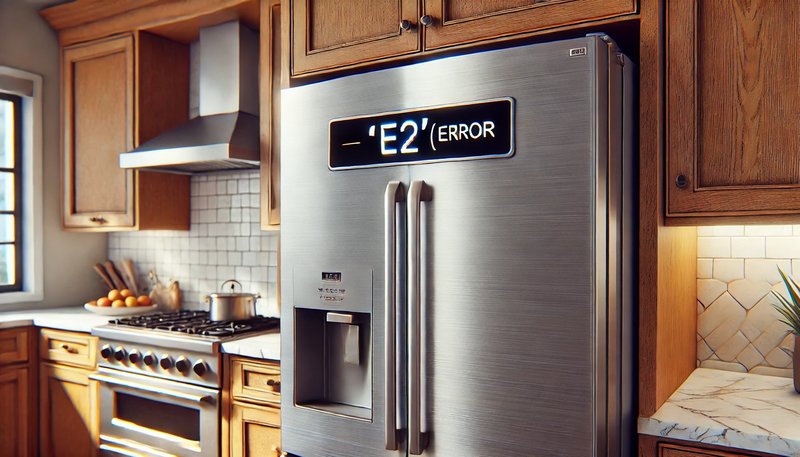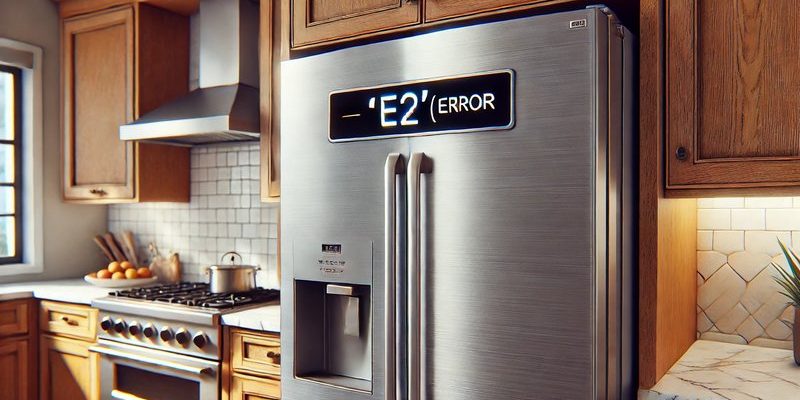
Refrigerators, like many other smart appliances today, have come a long way. They’re not just keeping your food cold; they’re acting like tech-savvy guardians of your groceries, complete with onboard computers to handle all sorts of tasks. When a GE refrigerator flashes the E2 error code, it’s attempting to communicate that something is amiss. Ignoring it might be akin to ignoring a leaky faucet; sure, you can pretend it’s not there, but eventually, it’s bound to cause bigger problems.
Understanding the E2 Error Code
When it comes to the E2 error code on your GE refrigerator, think of it like a smoke alarm going off. It’s there to alert you that something’s not right. Specifically, the E2 code typically refers to a fault in the evaporator fan motor circuit. It’s essentially a way for your fridge to tell you that it’s struggling to circulate cold air properly. Imagine trying to blow up a balloon with a hole in it — that’s kind of what’s happening inside your fridge with this error.
The evaporator fan motor plays a crucial role in keeping your refrigerator cool. It’s responsible for moving air over the evaporator coils and distributing cold air throughout the fresh food and freezer compartments. If the fan isn’t working correctly due to the E2 error, it can lead to improper cooling and potentially spoiled food. Just like a breeze on a hot day, that airflow is vital for maintaining the correct temperature inside your appliance.
Ignoring the E2 error is like ignoring a traffic jam; it might not seem like a big deal initially, but it can lead to a pile-up of issues down the line. If the circulation problem persists, your refrigerator could begin to overcompensate, causing it to run more frequently, which in turn could increase your energy bills and lower the appliance’s lifespan. The bottom line is, even if your fridge seems to be working fine now, that little error message is waving a red flag for a reason.
Why Does the E2 Error Happen?
You might be wondering, “What causes this E2 error in the first place?” There are several potential culprits that could trigger this message on your GE refrigerator. Often, the most common issue is a malfunctioning or failing evaporator fan motor. Over time, like any mechanical part, wear and tear can take its toll, leading to failure.
Another possible cause could be electrical issues, such as problems with the wiring or connections to the fan motor. Just as a loose wire in a speaker could cause it to cut out randomly, faulty wiring could prevent the fan motor from doing its job properly. It’s also worth inspecting the circuit board as issues there could be trickling down to cause the error.
Environmental factors can also play a role. For instance, if dust, dirt, or ice buildup occurs around the fan motor, it could prevent it from spinning efficiently or at all. It’s similar to trying to run in mud – you’re just not getting the traction you need to move. Keeping your refrigerator clean and well-maintained can sometimes prevent these annoying issues.
Steps to Address the E2 Error Code
So, how should you respond to this error? Well, the best starting point is to perform a basic inspection and cleaning of the evaporator fan area. Unplug the refrigerator before you start tinkering—no one likes a shocking surprise. Once safe, remove the panel covering the evaporator fan inside the freezer compartment and check for visible obstructions like ice or debris, which you can carefully remove.
If cleaning doesn’t resolve the issue, it might be time to test the fan motor. A multimeter can help you check if it’s receiving power correctly. If the fan motor’s not spinning despite power supply, it’s likely in need of a replacement. Replacing the fan motor can be a straightforward process for those handy with tools, but if you’re feeling uncertain, it might be wise to call in a professional technician to avoid any mishaps.
Should the issue go beyond the fan motor — say, wiring or circuit board problems — a trained appliance repair specialist is your best bet. They have the expertise to diagnose and fix complicated electrical problems safely and efficiently, ensuring your refrigerator returns to its optimal performance.
Preventative Tips to Avoid Future Errors
Though electronics can sometimes feel unpredictable, there are steps you can take to minimize the chances of encountering error codes in the future. Regular maintenance is key. Just like you wouldn’t skip oil changes for your car, regularly clean and defrost your refrigerator to keep it in tip-top shape. This means dusting coils, checking seals, and making sure vents aren’t blocked by food items.
You should also keep an eye on your appliance’s performance. Does it seem to be running more often than usual? Is the freezer not as cold as it used to be? These subtle signs could indicate impending issues, and addressing them early can prevent a small hiccup from becoming a full-blown headache.
Ultimately, taking care of your GE refrigerator as you would any important home appliance not only extends its life but also ensures it runs efficiently, keeping your food fresh and your energy bills in check. So, the next time your fridge flashes an E2 error, don’t ignore it — it’s the appliance’s way of asking for a little TLC.
